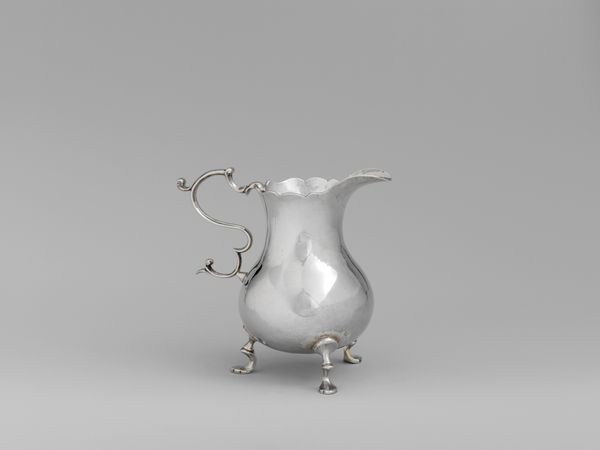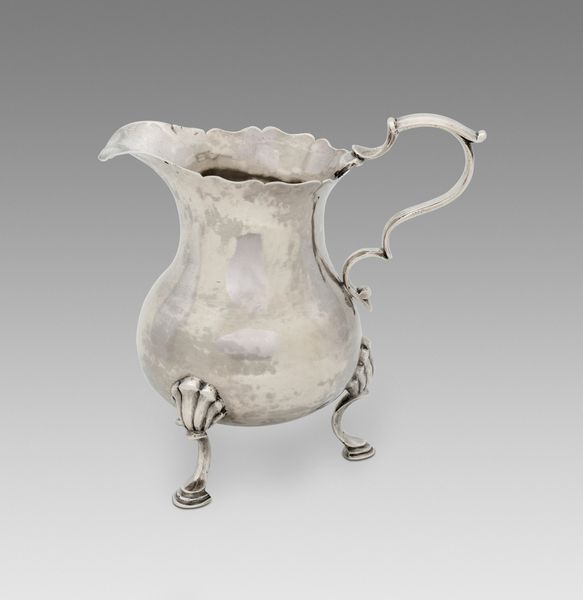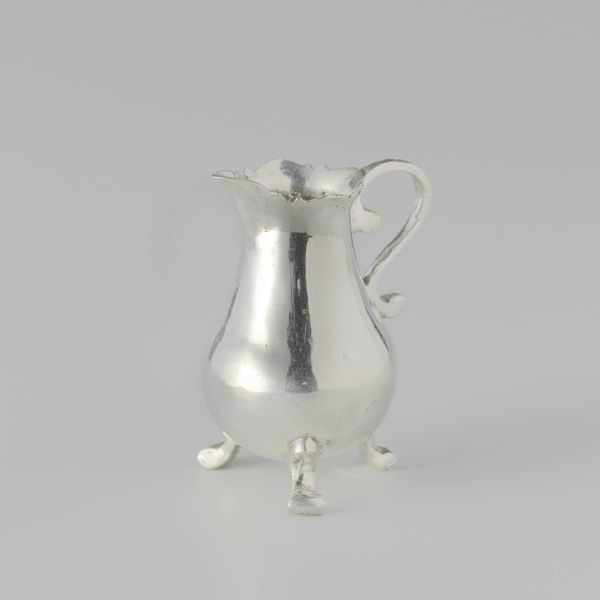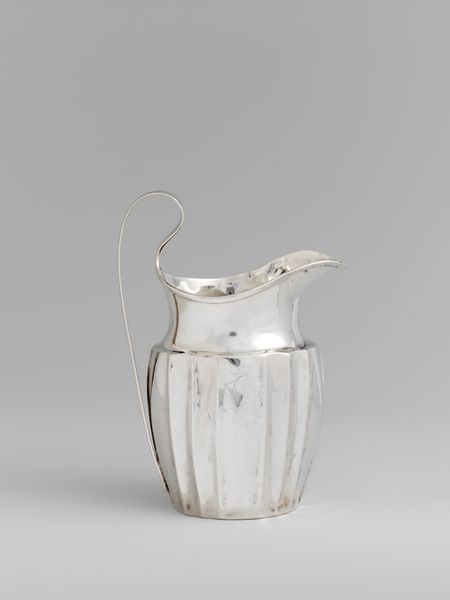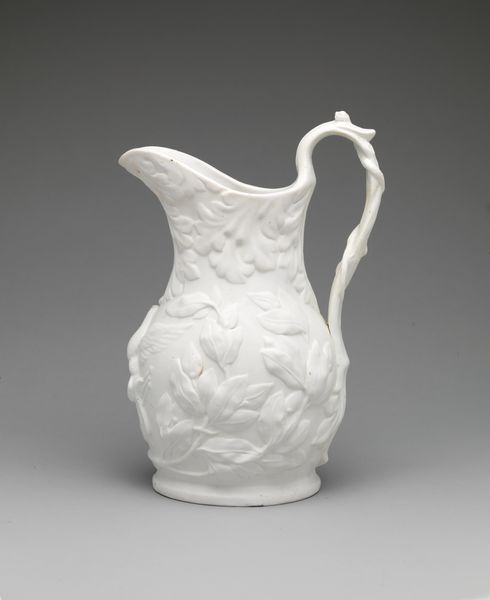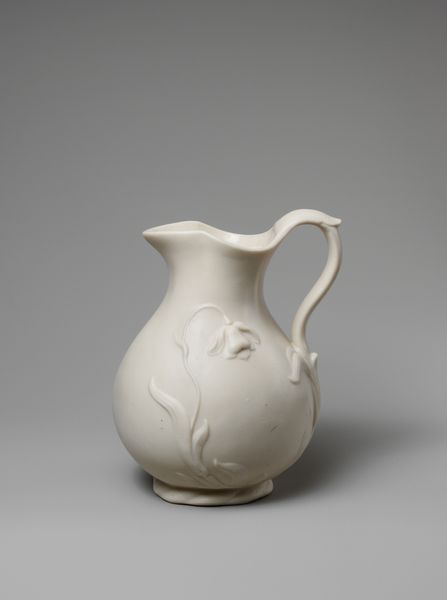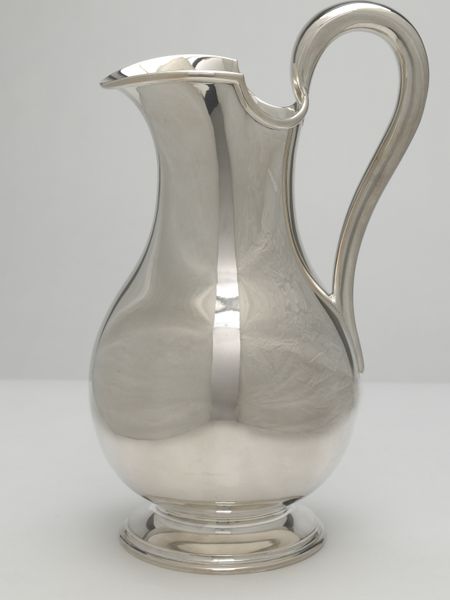
silver, ceramic
#
silver
#
ceramic
#
rococo
Dimensions: 6 3/8 x 4 15/16 in. (16.2 x 12.5 cm); 8 oz. 16 dwt. (273.8 g)
Copyright: Public Domain
Editor: Here we have a Creamer, crafted sometime between 1760 and 1780, and attributed to Philippus Priee. It’s made of silver, with elements of ceramic I believe, and it embodies the Rococo style. It feels quite… opulent, somehow innocent and decadent at once. What social narratives might be woven into such an object? Curator: Indeed! Let's consider the object itself: its silver composition signals luxury, a clear marker of social status. The Rococo style, with its emphasis on elegance and elaborate ornamentation, reflects the values of the aristocratic elite during the 18th century. What kind of labour, often unacknowledged, was needed to produce such an object? Editor: The contrast is striking: so much polish and grace, produced through what must have been pretty harsh labor conditions. I hadn’t considered that. How might we view its function—as a Creamer—through this lens? Curator: Precisely. Consumption itself becomes a politically charged act. The Creamer isn’t just a container; it is also an emblem of power, reflecting an economic structure built upon inequality and access to resources. Consider the global trade routes involved, and what that implied about colonial expansion. Editor: So, by serving cream from this object, one might be inadvertently participating in, or at least symbolizing, the colonial structures of the time. I guess that even something as innocuous as a creamer can carry a weight of historical and political baggage. Curator: Precisely. Seeing everyday objects as embodiments of historical forces encourages a more critical and informed engagement with our own material culture. Editor: It certainly changes how I’ll look at silver from now on. I will see not just beauty, but also layers of historical and political complexity, revealing untold stories behind such objects. Curator: Wonderful. Questioning the narratives of power embedded in even the simplest artifacts – that is a revolutionary act.
Comments
No comments
Be the first to comment and join the conversation on the ultimate creative platform.
